What is
Permasabi?
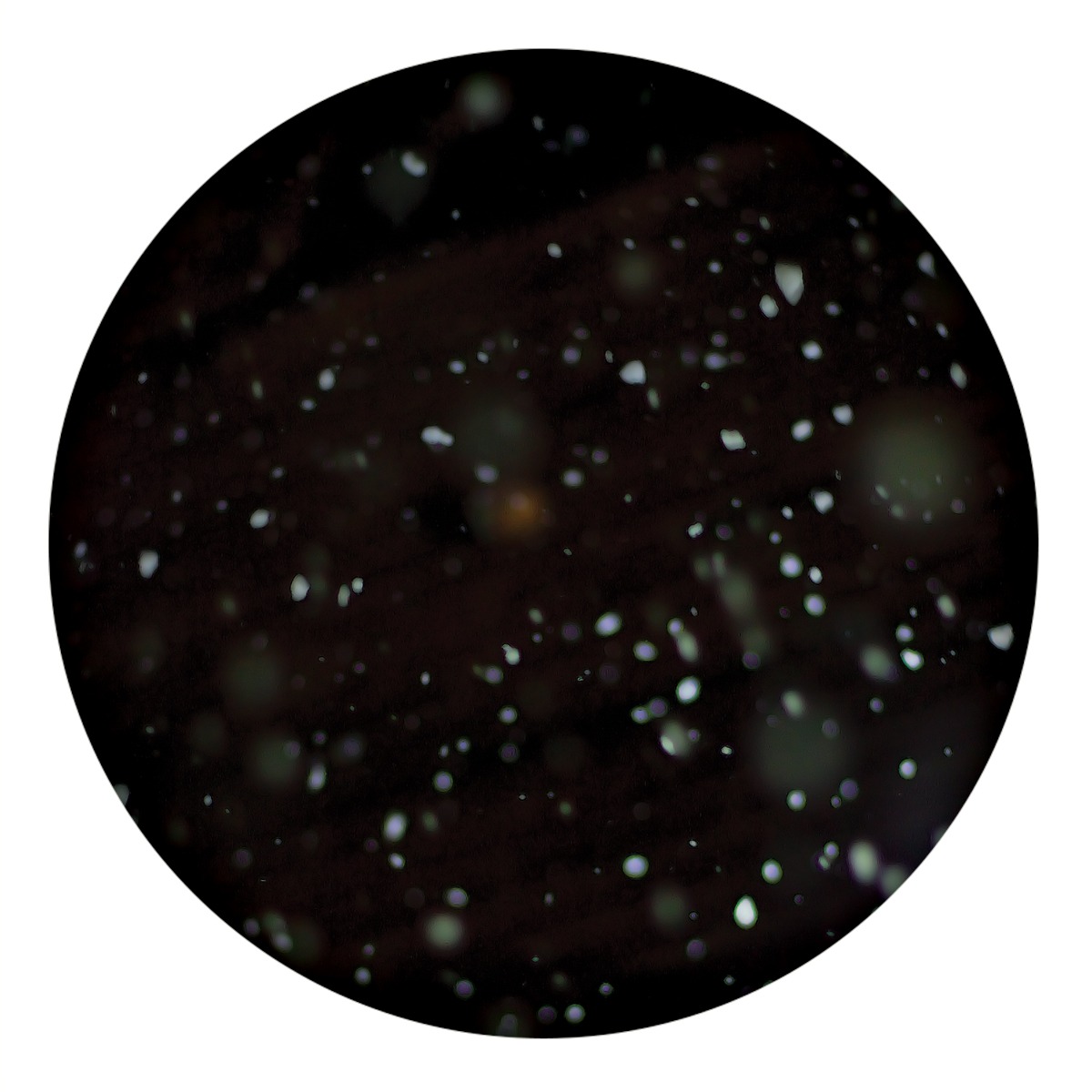
Perran Costi's
Eureka Moment
This was his eureka moment, he had found something that was unique that was exactly what he was searching for, principles that have so many possibilities for society.
His research has led him to the discovery of numerous other overlapping principles that he has unearthed from a very diverse group of philosophies which include but are not limited to: mindfulness, the gift economy, adhocism, the way of tea, the slow and do nothing movement, where they don’t overlap helps to fill in gaps and broaden the scope of his research, to create a new hybrid system of principles that can allow us to progress sustainably.

Cubes
About the
Permasabi Cubes
The Permasabi Cubes were mirrored cubes each 2.4m3, an approximation of the size of an office cubicle, garden shed or Japanese tea house that appeared to hover just off the ground, perfectly level with the horizon, seemingly floating in mid-air.
By utilising the elements already present in the area, from the materials and techniques used in the built environment to nature etc.
Almost invisible reflecting and distorting their environment like a series of mirrored minimalist public artworks, where the light was harnessed to reflect around the space dancing with its environment whilst playing and interacting with the public as it enticed them in.






















Permasabi Cubes
In Exhibition
At the end of 2014 and the beginning of 2015, as a real-world embodiment of Permasabi in Practice, Perran held the first exhibition of the Permasabi Cubes. A large-scale site-specific installation that inhabited and activated the central courtyard at UNSW Art & Design, Paddington. The Cubes inhabited the large open public space in the heart of Sydney, they activated and transformed the space and brought it to life.
The exhibition coincided with the opening of the new courtyard as part of orientation week, the Permasabi Cubes were the most ambitious art project to be created and exhibited in the history of the campus with approximately 500 people attending the opening night with free drinks provided by Choya and Sapporo Japan and thousands more people attending the work over the course of the two month exhibition.
Photos of the Permasabi Cubes have since been used as the feature images in the international promotion of the rebranding of the University, the name change to UNSW Art and Design from the College of Fine Arts and the completion of the new campus in Paddington, a major achievement for an honours student to represent the future of the University with such a broad reaching exposure of his artworks.
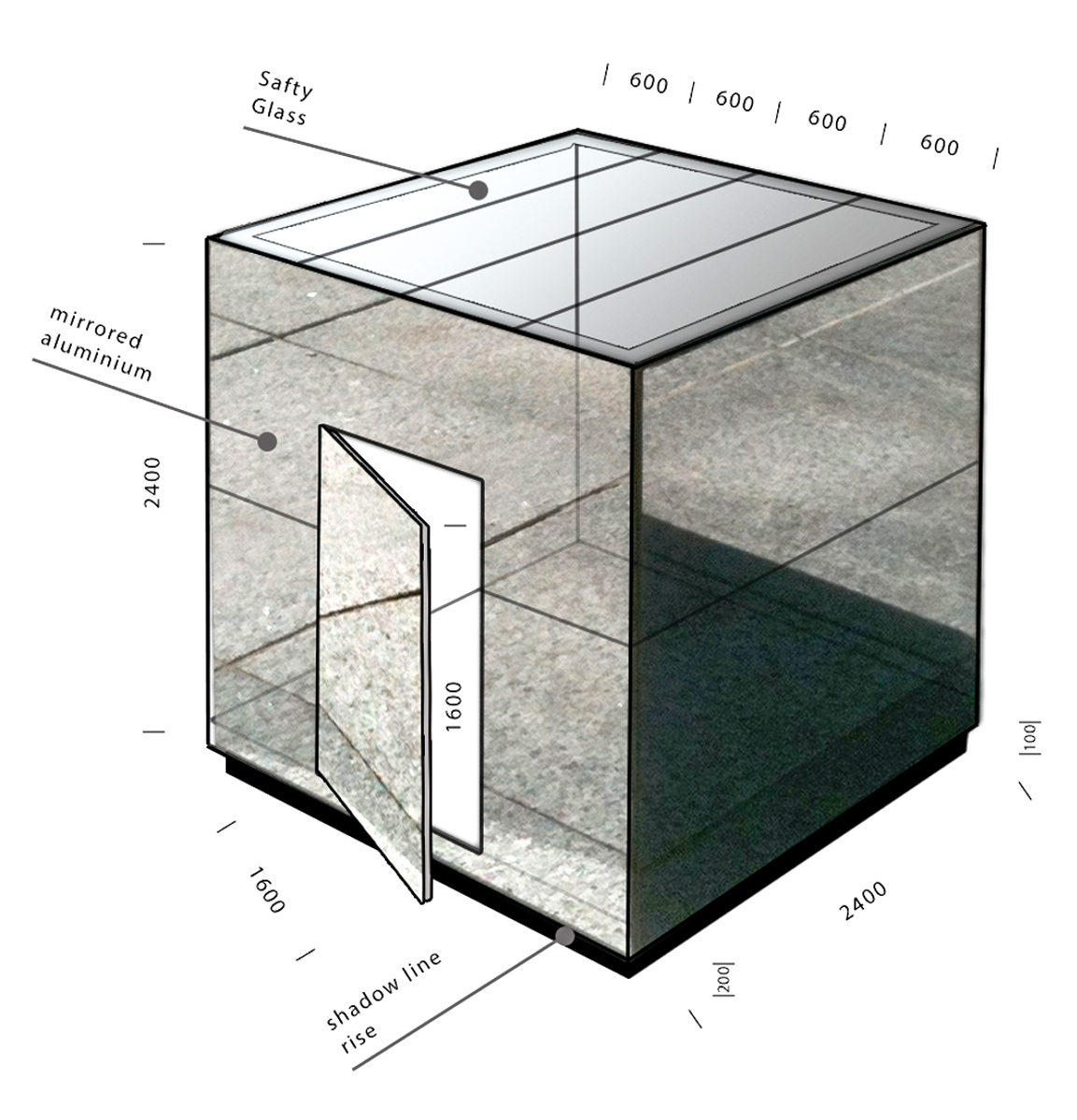
Location
Audience
Sponsors
Medium

Worlds
Inside The
Permasabi Cubes
The Permasabi Cubes allow people to step outside the everyday into another world, a personal space and a mindful experience, for a moment’s reprieve and into another habitat of possibilities, whilst being surrounded by the hustle and bustle of the city and its inhabitants.
The Cubes inhabited the large open public space in the heart of Sydney, they activated and transformed the space and brought it to life.
People could enter each Permasabi Cubes one at a time, through a little-concealed door to the interior of each cube. The low arched door encouraging them to bow as they enter, this changes the traditional way we perceive space.
We use our eyes to identify objects in space so what happens with our perception when all points of orientation are removed?
The eyes first notice the floor then work their way up the back wall to the ceiling and continue around the space that has no usual visual markers to understand the depth, perspective, and orientation of the space, similar to the uncanny sensation of a waking dream.
Simultaneously infinite on the inside and invisible outside perfectly reflecting and distorting their environment, allowing the experience of entering an infinite immersive environment whilst still being in the heart of the city, surrounded by millions of people.
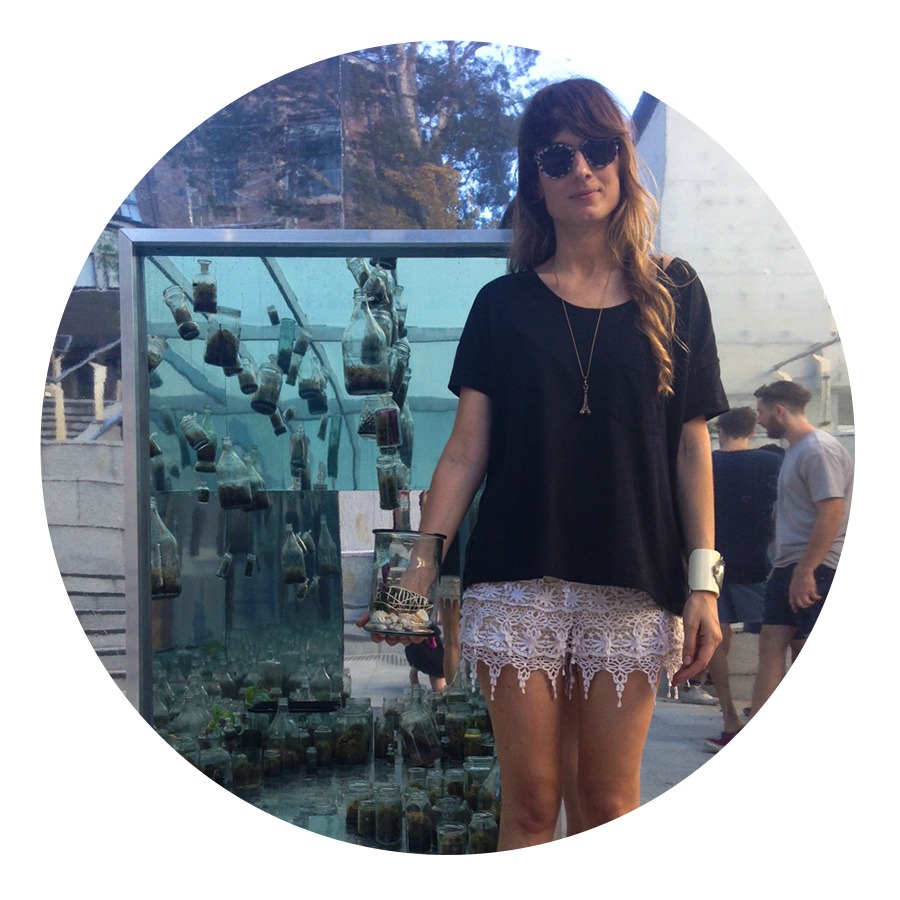
Anita Senaratna,
Concreate Playround
Sydney artist Perran Costi has always been fascinated with the idea of worlds within worlds – his previous works include a snowstorm at FBi Turns 10, a galaxy in a suitcase and creating a new society on Cockatoo Island.
But his latest exhibition, Permasabi, takes the concept to a whole new level.
It might sound like a certain spicy condiment, but ‘Permasabi’ is actually a word Costi uses to describe the worldview that influences him.
It’s a blend of wabi-sabi, a Japanese philosophy that’s all about transience and imperfection, and permaculture, a design concept focused on sustainability.
The exhibition consists of three giant mirrored cubes containing a galaxy, a desert and a rainforest, seemingly infinite worlds contained in small spaces.
Visitors can step into the cubes one at a time and explore each of the different worlds. The project was created by a team of artists, and took a year and a half to complete.
The Permasabi Cubes Contained

A Vast Scorched
Smoky Desert
An endless ever-changing environment seemingly lifeless tinged with the knowledge of the impermanence of all things and the need to take action.
The Perception Cube used the natural and man-made elements to create a microclimate that is a simulacrum of all conditions present in a desert landscape, the place heats up during the day sucking all moisture out of the air this makes it impossible to stay in the space for any considerable time similar to the sensation of standing in a desert.
At night it cools down as the stars and moon come out continuing its desert cycle.









































Changing Our
Perception
A time where we can use our full perception to create a new way to understand things and inspiration to influence change.
Perceptions arise as a mutual function of people and their environment. In wabi-sabi, specific social and natural conditions are closely interrelated; intuitive tendency has been to view the world of humanity and nature as a flux with no dividing line or symmetries as in Western perceptions.
“When we are certain, we don’t feel the need to pay attention.
Given that the world around us is always in flux, our certainty is an illusion”Langer, August 2006,
Personal Communication
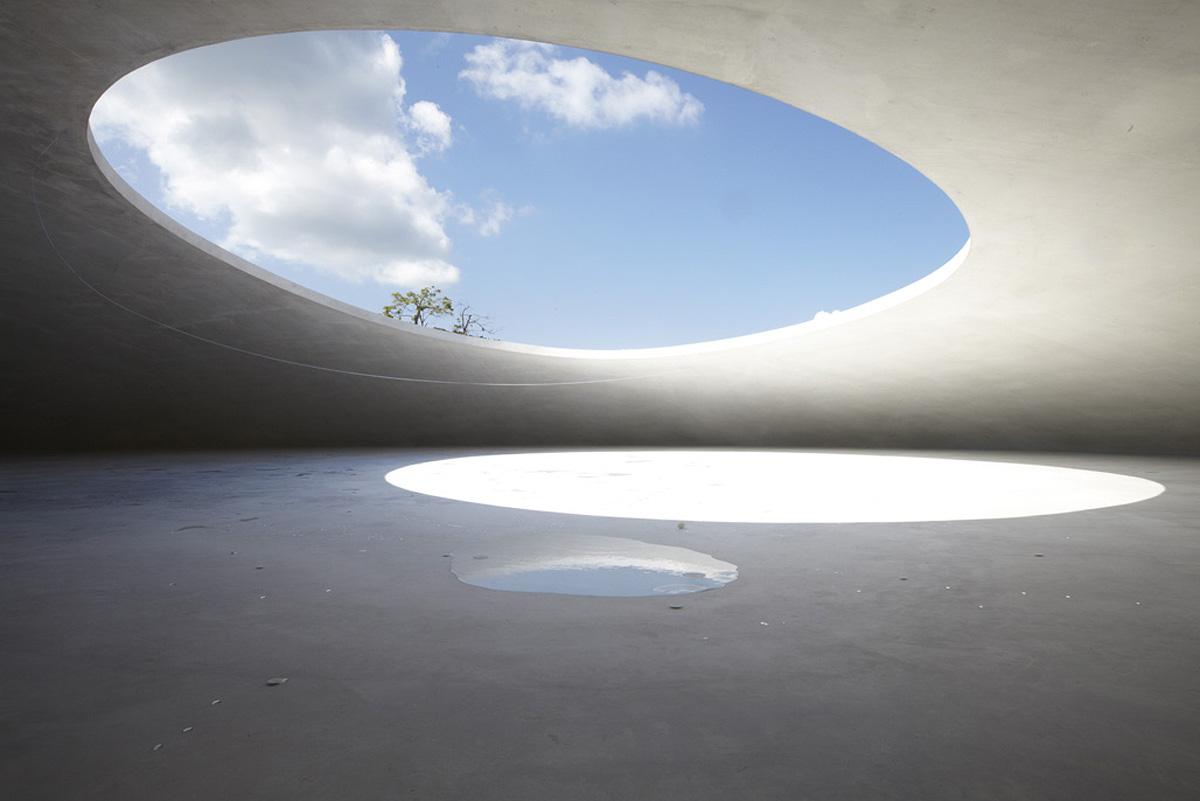
The Permasabi Of Rei Naito
Natio’s works use perception to make the participant lose their sense of where the environment merges with the artwork and themselves without any of the common markers we associate with space.
In her work Matrix 2012, the participants removed their shoes and enter an internal cavernous place allowing them to feel the environment that is a smoky white dome with seamless curves transitioning into the environment, standing alone on a majestic headland in Naoshima, Japan.
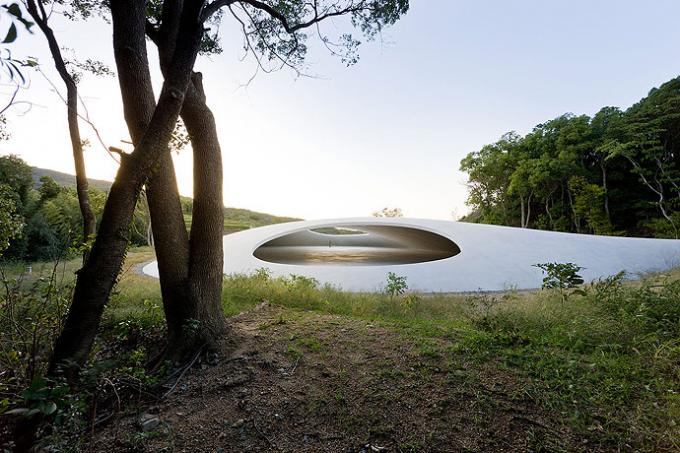
The place reflects the hues and light of its environment, at either end of place two large holes appear like portals to the outside, which merged harmoniously with the inside allowing a framed view of the sky and a lone deciduous tree.
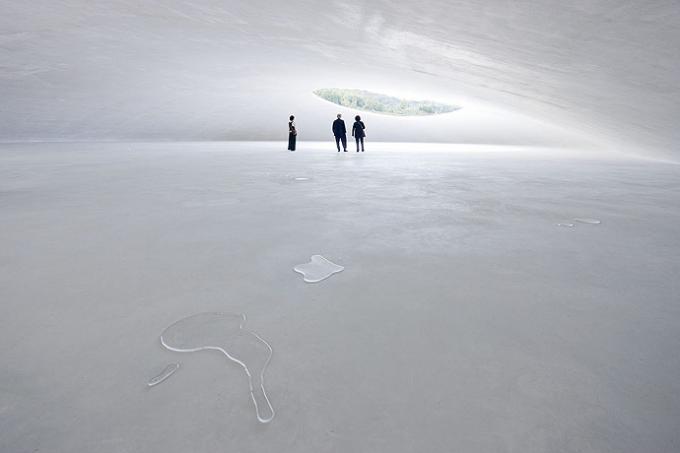
It first appeared that as a result of these openings tiny droplets of water are scattered on the floor. Upon closer examination, these little droplets form from the floor. Each droplet then goes on a very slow journey across the floor; sometimes joining with other drops, other times separating as they made their way to larger sink-holes, on a journey that might take hours to complete. They fall into the sinkhole, creating a loud gurgling sound that echoed around the space.
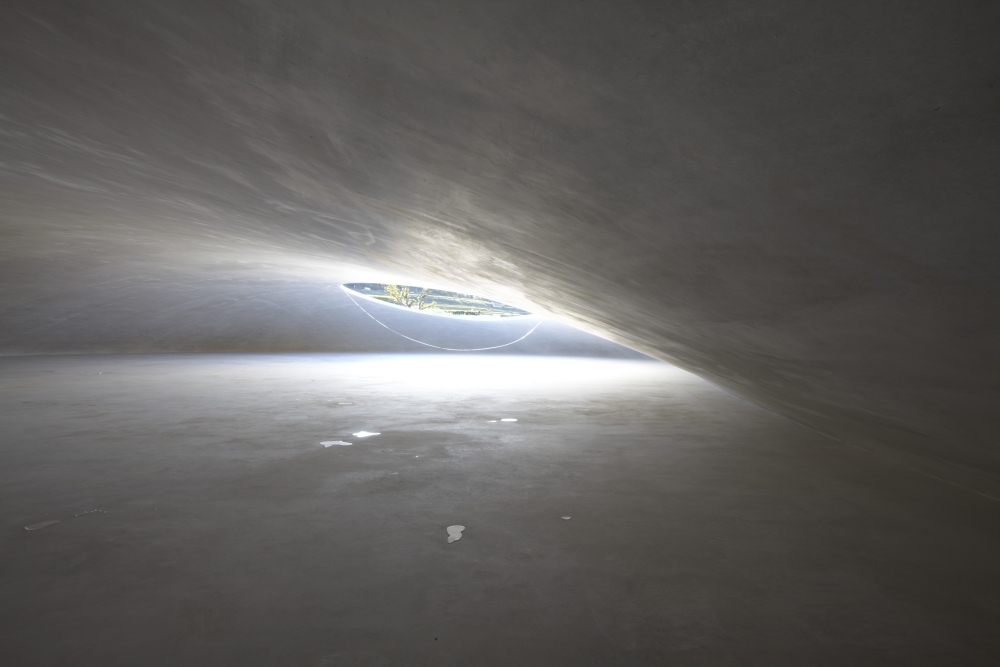
Making you aware of the other sounds – the shuffling of socks on cold cement, a muffled cough, the squawk of a bird flying over and the sea breeze gently rustling the leaves of the tree.
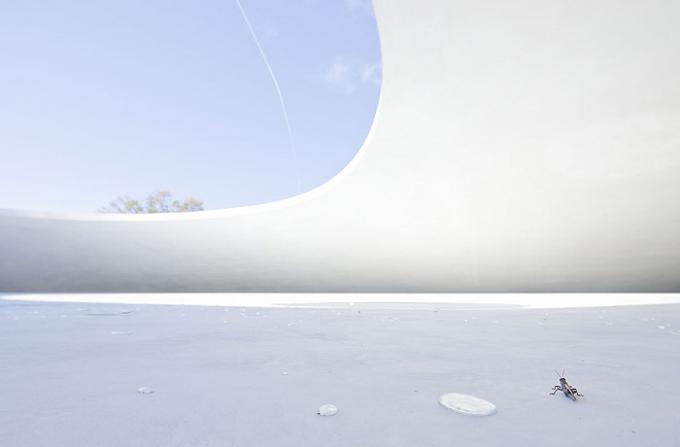

A Never-Ending
Rainforest Fog
The walls and floor were mirrored, the ceiling open to the sky through a pane of frosted glass that only allows filtered light to enter allowing the space to transform with the elements.
The glass ceiling and mirrored aluminium heating up and causing water to evaporate and humidify during the heat of the day creating a fog and ‘rain’ down at night as the space cooled, watering the infinite miniature forest in the process.
Through the use of mirror, frosted glass, weeds from the streets, water, sky, climate, detritus from the city and the elements to trigger the sensation of floating in an infinite fog of miniature environments teeming with life.



































The Search for
Knowledge
Being clear about these different ways of knowing is extremely important as we go forward: subjective experience, science, and professional applications are three separate entities in the body of knowledge that we will need to maintain as distinct dimensions of reality for this integrative effort to be valid and useful.
Premature pleading of these three elements can lead to erroneous conclusions about subjectivity, misinterpretations of science, and misapplications of these ideas to clinical practice and education.
By presenting these ideas, experiences, and research findings first, we will then be ready to ‘cleanly’ apply their synthesis to the important work of helping others learn, grow, and alleviate suffering.
If we mix them too soon for the sake of getting to ‘the practical’, we run the risk of confusing the ways we have come to build our vision of the mind and moment.
“The subtle differences created by ... air density, sea conditions and light diffusion grab the imagination with their fleeting ethereality the ineffable vacillations of the sea and sky, momentary atmospheric changes and wave patterns all woven into the image, memory upon memory.”
Toshiharu, 2005, p28,29
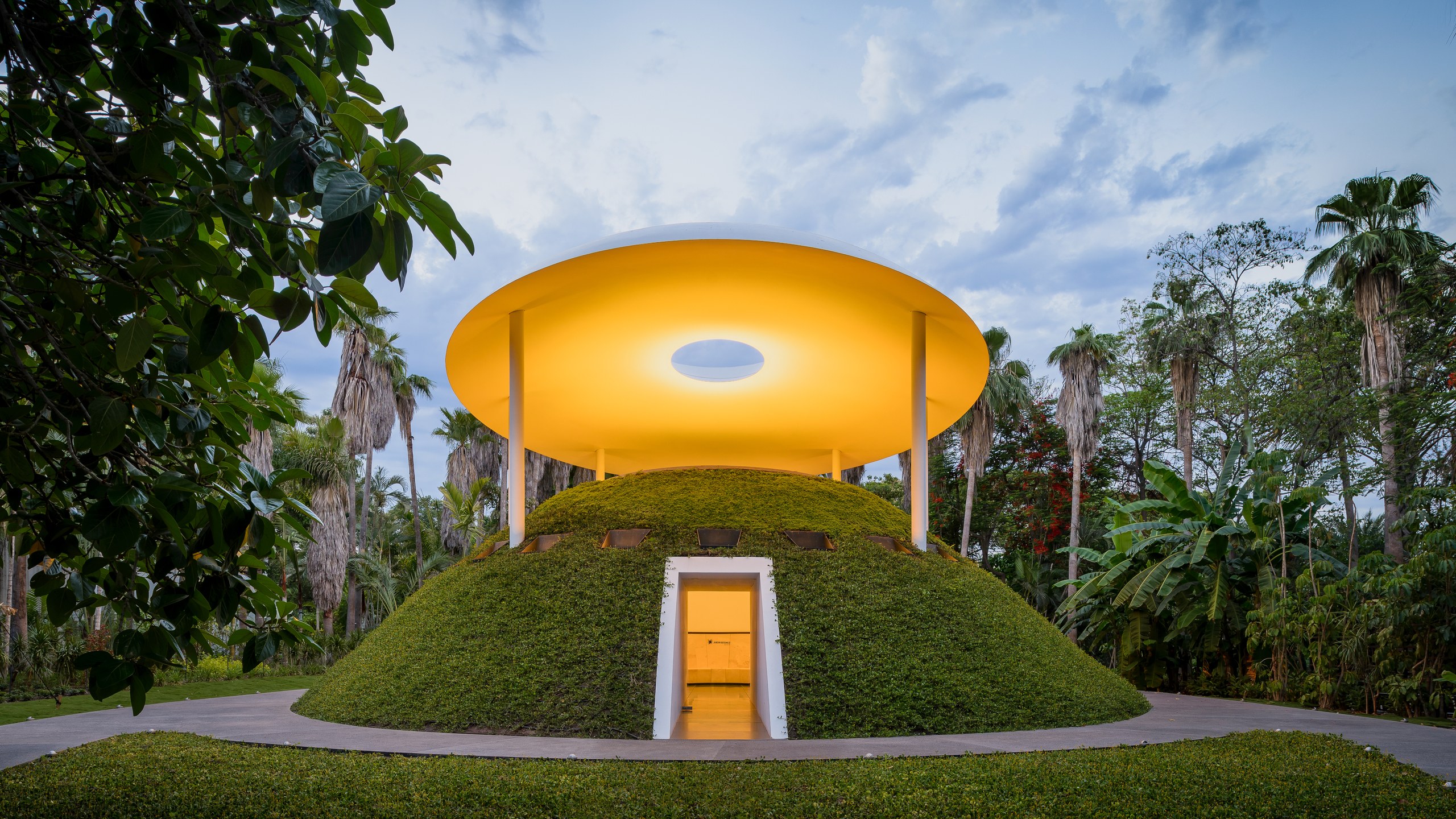
The Permasabi Of
James Turrell
Turrell’s works allow for a new way of seeing by making “sensation the subject and tools of his art” [Lutgens (2007), p109].
In Turrell’s works environmental events occur, spaces light up, things happen for a moment or for a time, they have no endpoint as they change with the action of the sun, the moon, the cloud cover, the day or season and this allows them to have visions, qualities, and a universe of possibilities.
They succeed in removing us from the familiar world. “We stand alone, face to face with the immeasurable expanse of … infinity” [Kwon (2011), p 73] you have a sharper sense of colour and lucidity than with your eyes open.
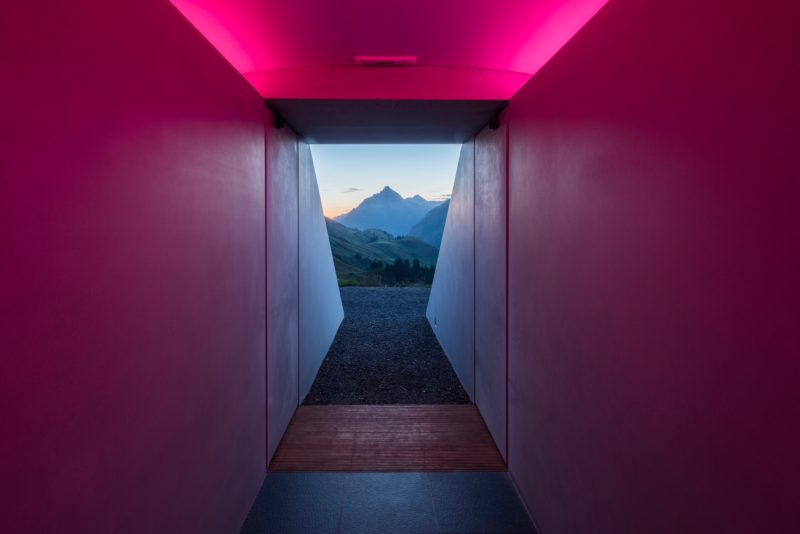

An Infinite
Uncharted Galaxy
Black mirror aluminium, light, sun, water & sound were used to trigger the sensation of floating alone in an infinite galaxy of stars, with a pool of water transforming the stars as the occasional sound of drips echoing as they hit the water.
A micro-climate was created by using a similar system to the other cubes, the room was insulated making it cool and silent, solar power and batteries allowed for all the energy requirements. needed to power the low watt lights, pump and sensor.
The system turns on when people enter the place and shuts down when they leave, a timer shuts the entire work down when it isn’t open to the public.








Embracing
Transience
In the works of Natio, Laurence and Turrell this transience is used to reach the viewer on a personal level that transcends our normal realities.
Turrell experienced this transience first hand In Japan, perceiving an extension of the earth into space that thereby enabled him to understand his place on earth as part of a whole. He incorporated the concept into his practice as a bridge between the rational insights of Western society and the contemplative knowledge of the East. Turrell’s spaces allow an experience of time that extends. “beyond the time of man-made history, reaching toward the temporality of the cosmos” [Kwon (2011), p73].
In a similar way to Turrell, when Perran encountered wabi-sabi first hand in Japan, he had an experience that left him profoundly altered. “a quiet contemplation of the stones in the Japan Garden brought one much closer to the secrets of the cosmos than billions of dollars spent travelling in space” [Bruderlin (2009), p127].
Our recognition of impermanence carries with it a sadness; and yet, awareness of impermanence also carries with it an intensified sense of the preciousness of each moment and each of the things of this world. “the universal impermanence in life” results in a recognition “that relationships, even those we cherish, are fleeting. They exist in the moment, and once this is seen with our whole heart, every moment becomes precious, stretching beyond the boundaries of time” (Davey 2003, 81-82)
"a quiet contemplation of the stones in the Japan Garden brought one much closer to the secrets of the cosmos than billions of dollars spent travelling in space”
Bruderlin, 2009, p127
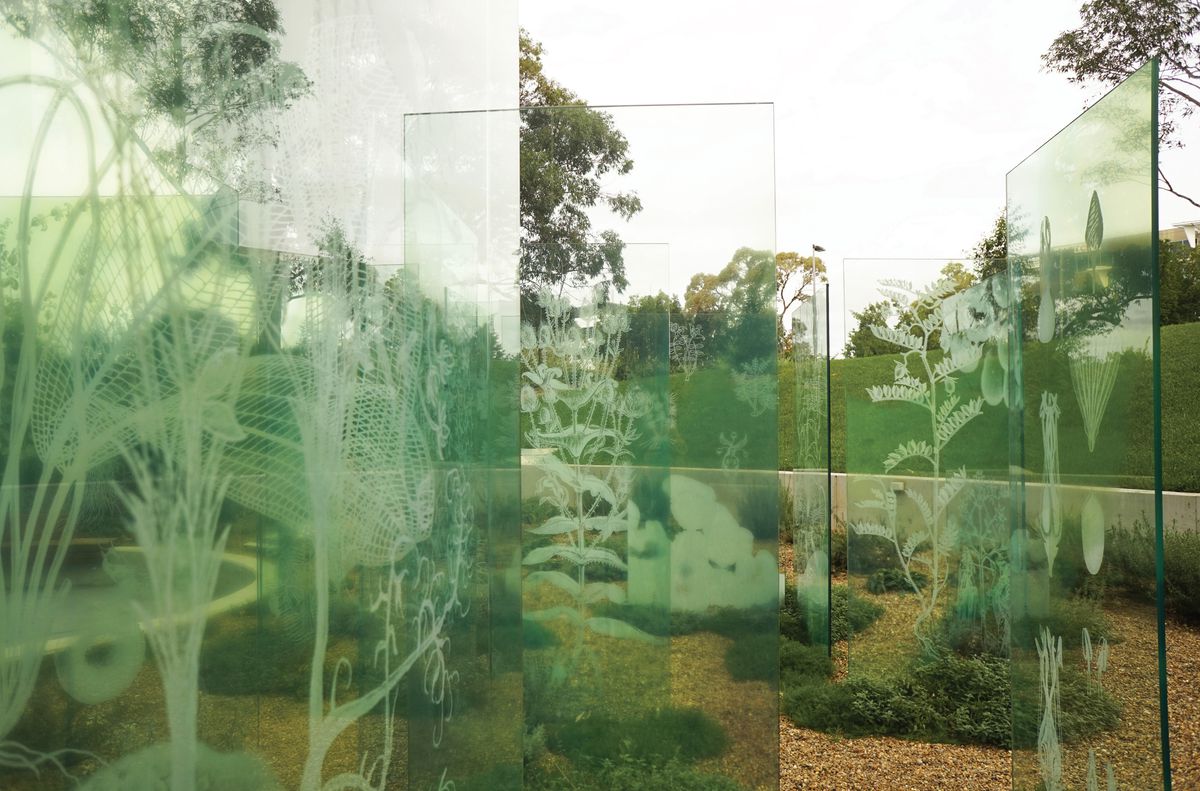
The Permasabi Of
Janet Laurence
Laurence uses transience in her works as a means to distort the participants perception.
“layering slows perception, evoking the passing of time and memory, causing the viewer to linger and look more closely, perhaps to meditate on mysteries that lie beyond the veils.” [Murray, 2008p 65]
Laurence’s works create the effect of dissolving architecture into nature, heightening our sense of place, the mutability of life where nature is in a state of constant transience, nothing is forever and yet within the immensity of nature, time itself dissolves into the present.
Naito, Laurence, Kapoor and Turrell use transience as a bridge between the work, the participant and the world around; in much the same way Japanese architecture uses nature, light and shadow, screens, openings, wide verandas and overhanging eaves to reach out to the world and make the natural landscape part of the interior.
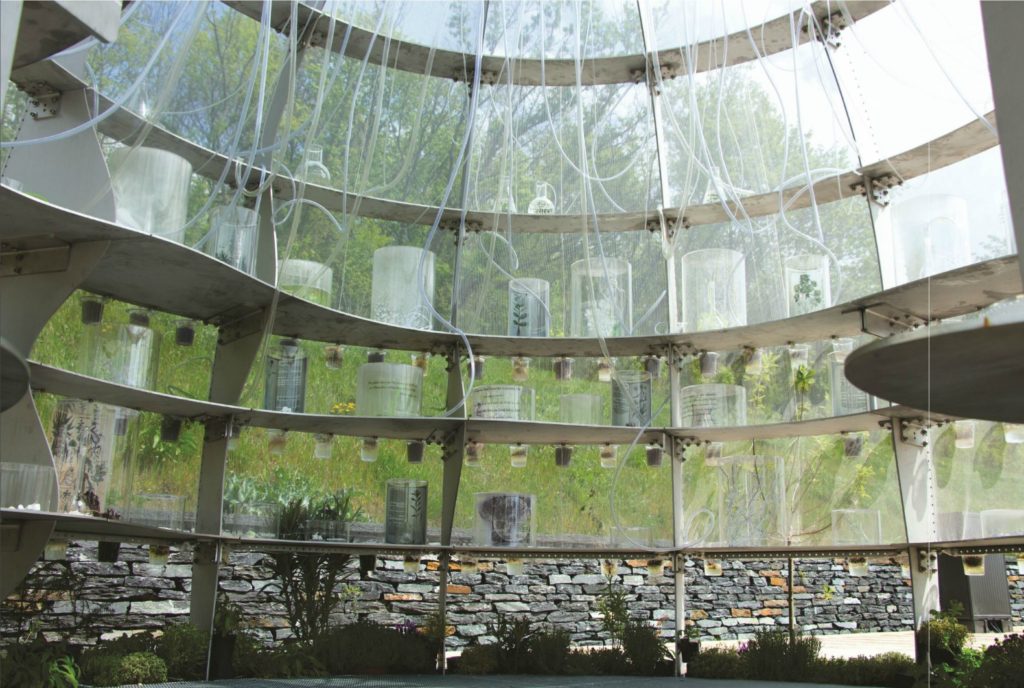
“The beauty of a Japanese space really is based on the gradation of shadows, our connection to the living, organic world is an ecological concern, (to) create spaces of perception that can bring us into contact with the real life-world” [McGillick, (2006), p90]
In permasabi everything is in flux, a work in progress, which is either devolving toward or evolving from nothingness. The transitory nature of time allows a sense of wonder at the world, and beautiful melancholy about its fragility this “shows us how extraordinary life can be, but reminds us that little can last.” [Brades (2001), p5]
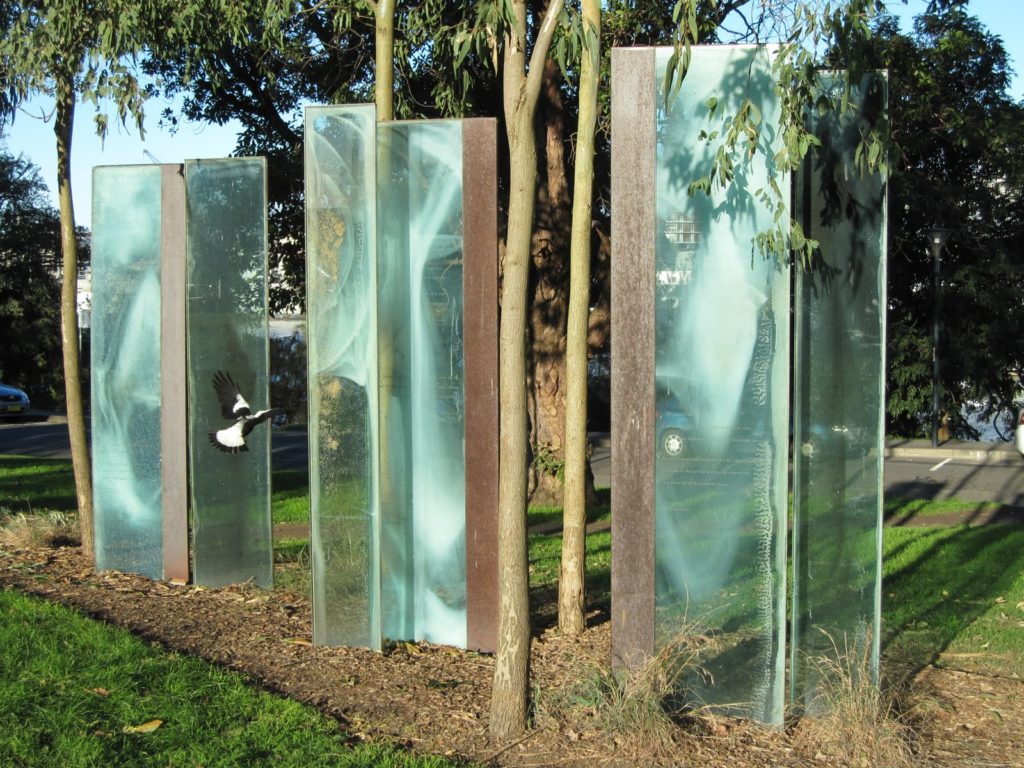
Laurence’s works create the effect of dissolving architecture into nature, heightening our sense of place, the mutability of life where nature is in a state of constant transience, nothing is forever and yet within the immensity of nature, time itself dissolves into the present.
“After all, when everything is arranged and complete there is nothing more to be said or done when one says ‘finished’, there is no life there anymore, but if one says ‘unfinished,’ life continues, movement goes on… When something is unfinished, it is finished.” (Leach 1975, 89) [Self-cultivation]
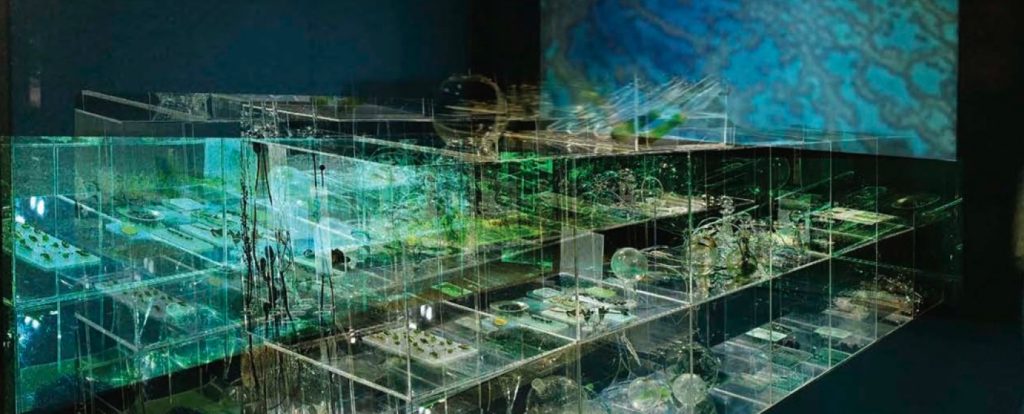

Workshops
Free Terrarium Workshops
The participants were asked to harvest plants from the cracks of the streets on their way to the workshop and bring reused glass vessels, the unwanted detritus of the contemporary world.
Once they had created the Terrariums they where invited to sign the terrariums taking ownership of being an artist and creating a living self-perpetuating environment, it was then signed by Perran linking it to permasabi and adding a ‘commercial art’ value to refuse.
These terrariums were gifted to random visitors to the Perception Cube during the exhibition and continually replenished through continued terrarium workshops.





























We Need To
Engage
“Beauty can be coaxed out of ugliness. (It can) spontaneously occur at any moment given the proper circumstances, context, or point of view. Beauty is thus an altered state of consciousness, an extraordinary moment of poetry and grace.” [Koren 2009, p51]
The role of early adopters in nature like grasses, moss, ferns and weeds parallels the fringe in society, the weeds grow in the cracks previously uninhabitable, in poor conditions hanging to the fringes of the built world, creating the building blocks of life.
In the same way weeds in the built environment transform space creating mulch, nutrients, water retention, propagation, shade, protection etc.
The fringe transforms space, culture and society breaking new ground, creating vibrant and hospitable space that constantly reinvents itself.
Without the fringe thinkers we wouldn’t have come down from the trees, invented language, realised that the world was not flat and gone to the moon.
Turning The Ordinary Into The Extraordinary
Every element of the work has been considered to the nth degree, and constructed in a way that it would transform with its surroundings, taking on the changes in light, time of day, season, weather, etc. Using the least energy, effort, time, resources and stress needed to achieve the end result.
All materials are either recycled or reused materials wherever possible or in the instance when new materials were used, they can be offset in many ways. All materials, building techniques, and designs are used in the contemporary built environment. Each site is a simple self-contained self-powered environment.
All materials were chosen for their intrinsic qualities to be easily maintained, long-lasting, age gracefully and withstand harsh conditions and traffic.
The cubes are designed to be structurally sound in any weather conditions including high winds and storms, they are waterproof and self-draining, lockable, and designed to accommodate large traffic areas.
The aluminium panels are waterproof and low slip they are often used in high traffic areas that become wet, like large-scale installations to day-to-day applications like kitchens etc. due to the qualities of the aluminium.


















